Up here in the High Arctic, the 2,200 residents of Longyearbyen share their home with polar bears and go without sunlight for five months of the year. Read on to understand more about this truly fascinating place.
At 78.13 degrees north, Longyearbyen is the world's northernmost permanently inhabited town. There are settlements farther north, but Longyearbyen is a complete town with shops, services, and even an airport, yet smack in the middle of Arctic wilderness.
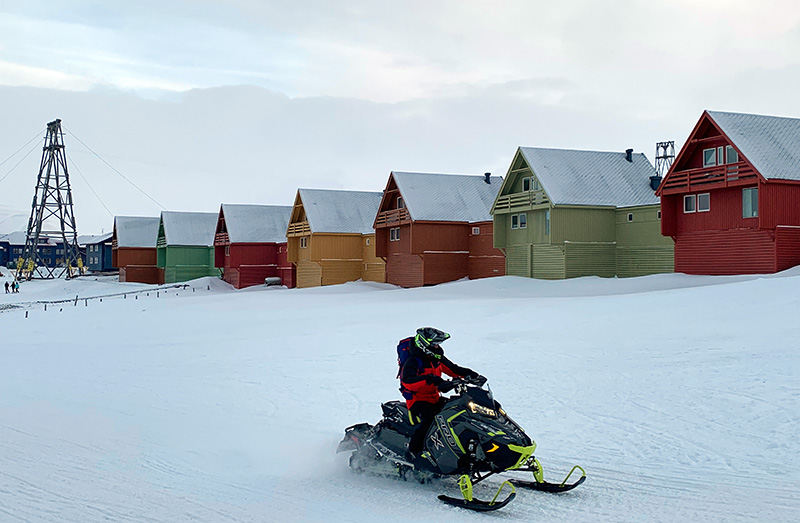
Ever since I moved to Norway back in 2011, Svalbard was top of my bucket list. I finally ticked it off in 2019, and loved it so much that I've now been five times at different times of the year.
Having written about life in Norway for more than ten years, I always wonder why people choose to live where they do, how they spend their time, and so much more. That goes doubly for Longyearbyen, where there are such stark differences between summer and winter.
Table of Contents
Video Introduction to Longyearbyen
After five visits to Longyearbyen, I have made a video to introduce you to one of my favourite parts of the world. You can watch the video I've made below, or read on for more insight and a ton of photographs. Or do both!
As you'll see from the video, I've visited in the summer, autumn, the dark winter, and the bright winter! Each time of the year offers something very different.
Where is Longyearbyen?
Although the town is administered by Norway, you have to look a long way farther north on a map than the mainland! All the way up to 78 degrees north.
For comparison, the North Cape (Nordkapp) is only at 71 degrees north, as is Barrow/Utqiaġvik in Alaska.
Getting here involves a three-hour flight from Oslo with either SAS or Norwegian. Sometimes the SAS flight calls at Tromsø to pick up additional passengers on the way.
At this location, Longyearbyen is the northernmost permanently inhabited community in the world. There are a handful of other settlements farther north, including Ny-Ålesund on Svalbard, but they are purely research settlements. Longyearbyen is a fully-functioning community.
Why is there a town here?
Great question! If you arrive in the winter, it's probably the first thing you'll wonder.
The town was founded in 1906 by the American John Munro Longyear. Ten years later he sold the settlement to a Norwegian coal company, who named their new home Longyearbyen. The name simply means Longyear Town in Norwegian.
For decades, Longyearbyen was a company town. Its sole purpose was to support the mining operation and provide homes and services for the employees and families. These days although coal mining still exists, the town has other elements to its economy.
Who lives in Longyearbyen?
Aside from the employees and families of the remaining coal miners, Longyearbyen is home to an incredibly diverse community.
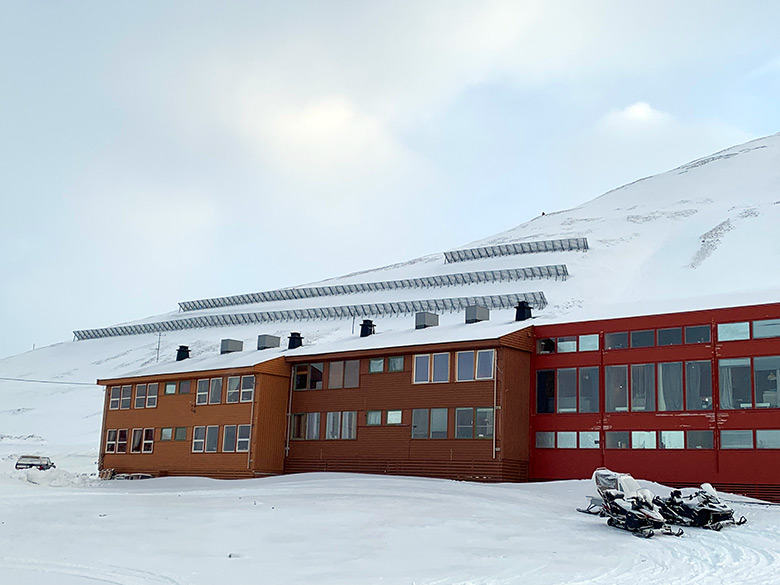
Because of the unique immigration rules defined by the Svalbard Treaty, more than 50 nationalities are represented here. That's quite something for a population of just 2,300 permanent residents. That said, approximately 66% of the population is Norwegian.
Read more: What's It Like Living on Svalbard
One of the more intriguing populations is more than 100 people from Thailand. According to several people I spoke to, this stems from the coal miners taking holidays in Thailand, falling in love, and bringing their brides back to Svalbard.
Over the years, their families and friends joined them, and the community is now firmly established.
Half of the students and researchers based at the University Centre in Svalbard are of a non-Norwegian background. Listen to this interview with a researcher to find out more about the experience.
The diverse nature of the community means English is more widely spoken than on the Norwegian mainland. The official language of government is Norwegian, but English is commonly spoken in shops, restaurants and bars.
The town centre
In many ways, Longyearbyen town centre looks like any other small Norwegian town.
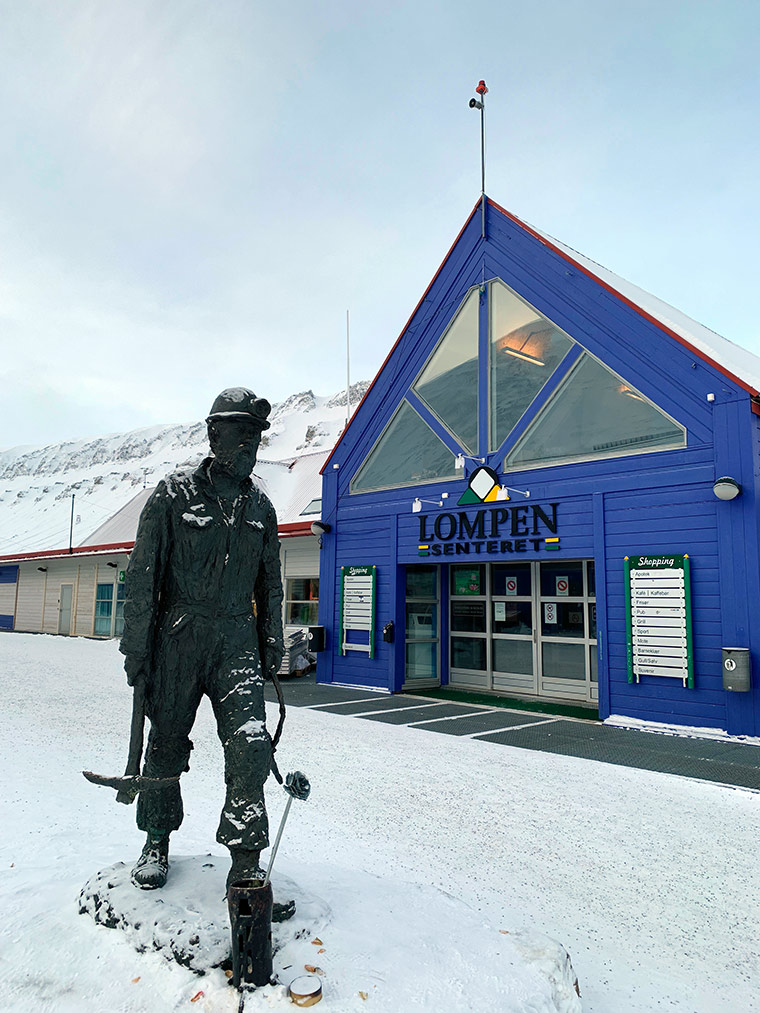
There is a hospital, post office, bank, library, hotels, church, petrol station, restaurants, shops and bars. The shopping centre provides welcome respite from the cold at this time of year!
Fruene, the cafe inside the shopping centre, seemed to be the beating heart of the community. There was a curious mix of locals and tourists, with everything from sandwiches and coffee to homemade chocolates on offer.
As I left a tourist was inquiring about the bus to the airport, while a local was ordering a cake for a birthday celebration. It seems the businesses that succeed here are the ones that multitask!
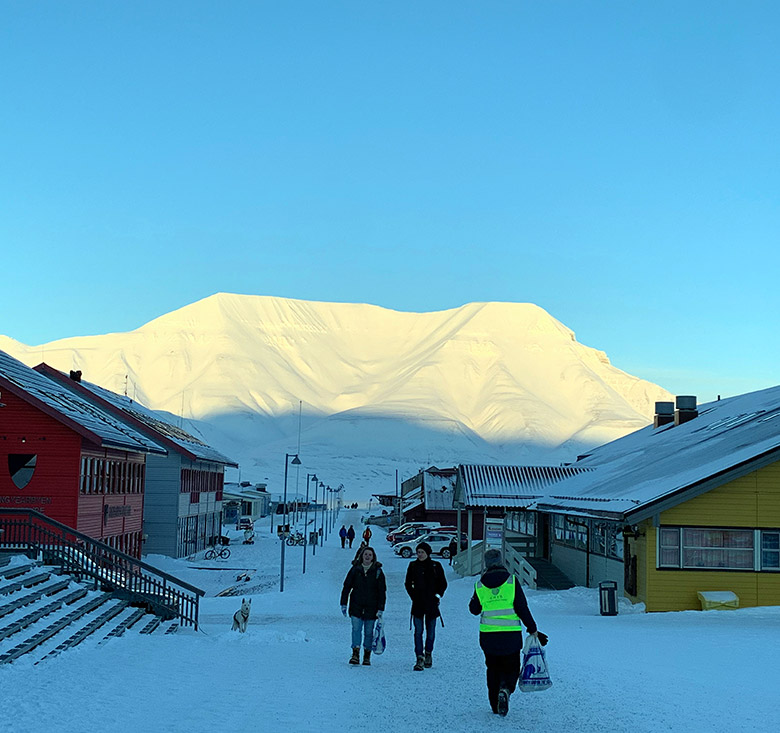
The local newspaper
The town centre is also home to many businesses including the offices of the local newspaper. Svalbardposten is the world's northernmost newspaper, with a weekly magazine-like format.
A couple of journalists sit here in the town and finalise the pages by 4pm on Tuesday. The very next morning, the magazines are on their way up on the flight from Tromsø!
Several years ago I interviewed the former editor Eirik Palm via Skype. I was delighted to be able to meet the current editor, Hilde Kristin Røsvik, in person. She told me the job doesn't feel like a local newspaper because of the hard issues they continually cover: avalanches, polar bear attacks, the economy, climate change, and more.
Svalbard Church
Longyearbyen's church is located slightly higher up the hillside overlooking the town centre.
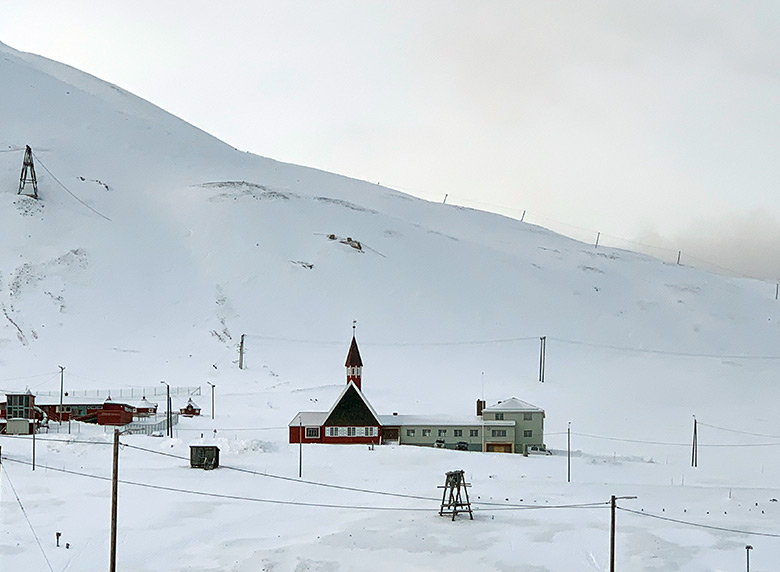
The foundations for the current Svalbard Church were laid in 1956, and it was consecrated two years later. The wooden, rectangular church can hold around 140 people. It is the only church on the archipelago, aside from the Russian Orthodox chapel in Barentsburg.
The Church is home to a Church of Norway minister and two other employees, who also make visits to other communities on Svalbard including Ny-Ålesund.
Regular services are held here in Norwegian at 11am on Sundays and 7pm on Tuesdays. The schedule is subject to change so check the website if you are planning a visit.
Nybyen
About two kilometres south of the town centre is Nybyen. Although translated into English as ‘The New Town', Nybyen is anything but! It was the new town when it was originally built to provide accommodation for coal miners.
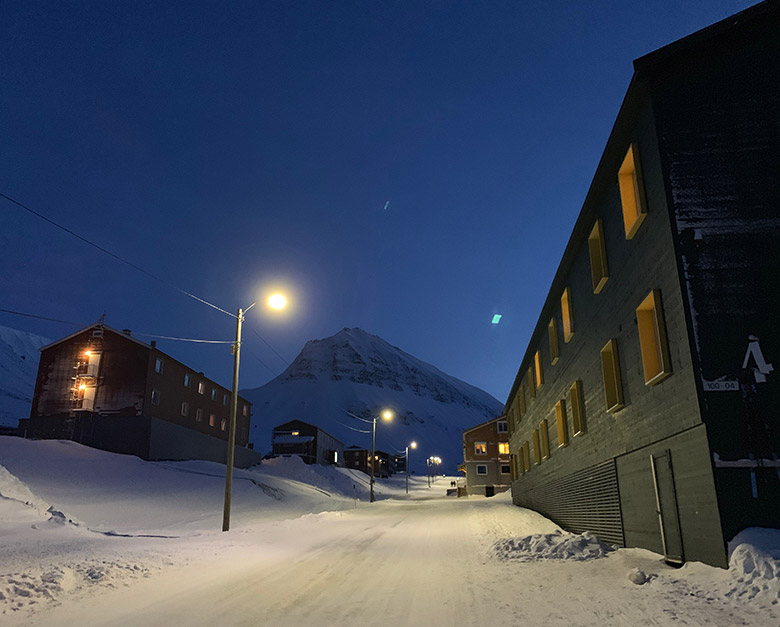
Today the buildings are home to the hotel and restaurant known as the ‘Coal Miners' Cabins, a popular place to stay and eat. In the restaurant I chatted to an English guy working behind the bar, while eating a reindeer burger and watching a wild reindeer wander past the window.
Also in Nybyen you'll find an art gallery and even a vet.
An urban Arctic farm
Also calling Nybyen its home is Polar Permaculture. Started by chef and food enthusiast Ben Vidmar, the company aims to develop sustainable farming solutions for the town. Although fresh food is available from the local supermarket, all of it must be flown or shipped in from the mainland.
Read more: Growing food on Svalbard
I interviewed Ben for a future episode of the Life in Norway Show, in which he talks about why he moved to Svalbard, why he started the business, and his hopes for the future. Watch out for it, coming soon.
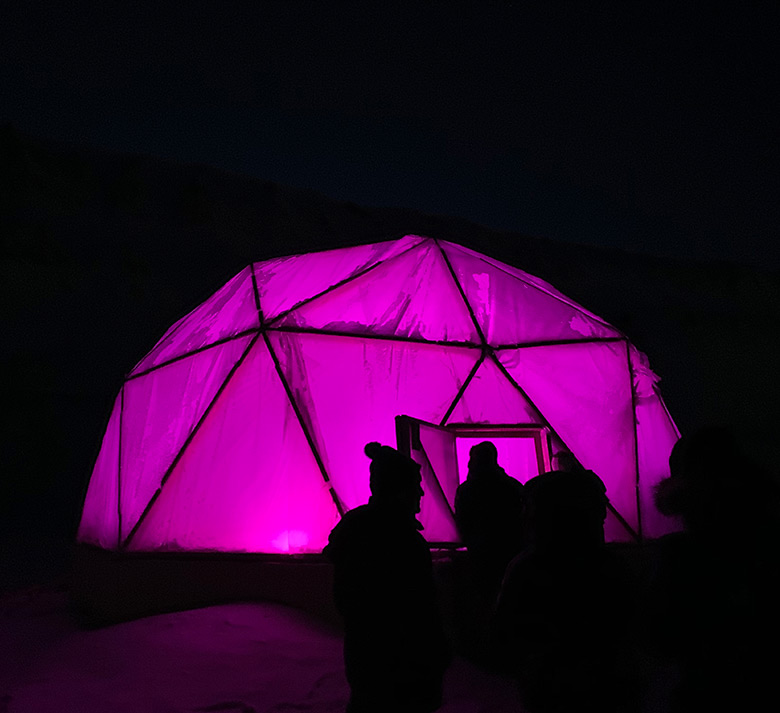
During my visit, Ben showed around a group of Master's students from the Oslo School of Architecture and Design. They were in town to investigate sustainable solutions, and all seemed to throughly enjoy their visit.
The university centre
Down by the waterfront is the modern building housing UNIS, the University Centre of Svalbard. Unsurprisingly, this educational centre is the world’s northernmost higher education institution. It specialises in Arctic biology, geology, geophysics and technology at undergraduate, graduate and postgraduate level.
Just across the road is the North Pole Expedition Museum. I thought I knew a lot about the topic having read a lot about Amundsen in the past, but I learned plenty here. Packed with old documents and newspapers, the museum dives into more detail than many other locations.
During my visit I met an Italian girl working at the museum, who was spending her seventh summer in the town. She was just one of the seasonal workers I met who keep coming back year after year.
The Svalbard Museum tells the comprehensive story of the archipelago. The early mining days of Longyearbyen, the fauna and flora, and the changing environment are all addressed.
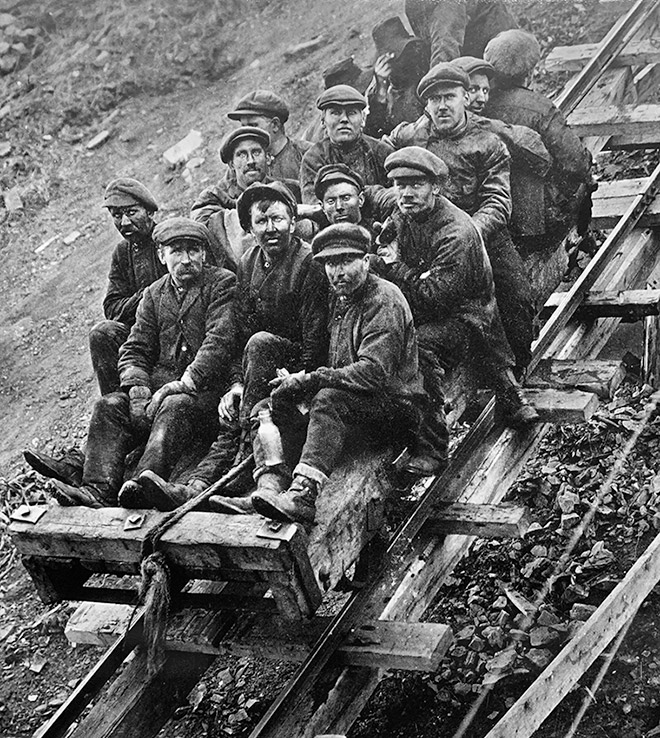
Accommodation in Longyearbyen
I mentioned the housing shortage earlier, but there is quite a bit of accommodation for tourists. It's best to book well in advance to secure the best availability.
Search for accommodation with our friends at Booking.com
There are full-service hotels including the Radisson Blu and Funken Lodge, through to hostel-style accommodation. There is even a campsite by the airport! You stay there at your own risk though, as polar bears do sometimes roam the area. The campsite is only open in the summer.
Restaurants in Longyearbyen
There are a surprising number of places to eat and drink in the town, although most are part of hotels.
Stationen and Svalbar are two standalone bars in the town centre that I visited. Stationen serves food all day. I enjoyed a hearty goulash there and met a Swedish bartender who just celebrated her fifth year in the town.
Close to Nybyen but very much standing on its own is Huset. The big old white house has quite the history. Peter, the front-of-house manager, talked me through some of it in the video. Today it's a fine dining restaurant, bistro, bar, and nightclub.
Shopping in Longyearbyen
Sports and outdoor clothing stores dominate the town's retail offer. If you need a woollen beanie or new pair of hiking boots, you're sorted!
Aside from these stores, Svalbardbutikken is the town's only supermarket, selling everything from cosmetics and homewares to fresh fruit and vegetables.
Inside the store is the Vinmonopol (state-run liquor store), called Nordpolet. To buy alcohol from here visitors need to show their return ticket (a mobile app is fine) and locals must show their quota card. Yes, you read that right! Locals are only permitted to buy one litre of spirits and 24 cans of beer per month.
Svalbard is a tax-and duty-free area, so prices for many goods – especially alcohol in Nordpolet – are cheaper than on the mainland. Goods taken from Svalbard back to mainland must clear customs on arrival, just as if entry occurred on an international flight. Returning passengers are able to take the regular duty-free limits with them back to mainland Norway, but are not able to buy duty-free on arrival in Norway.
Other stores slightly outside the town centre include an electronics shop and a car dealership and garage.
Svalbard Airport
Svalbard Airport Longyearbyen (LYR) is located just a couple of kilometres north-west of the town. It is the world's northernmost airport with regular, scheduled flights.
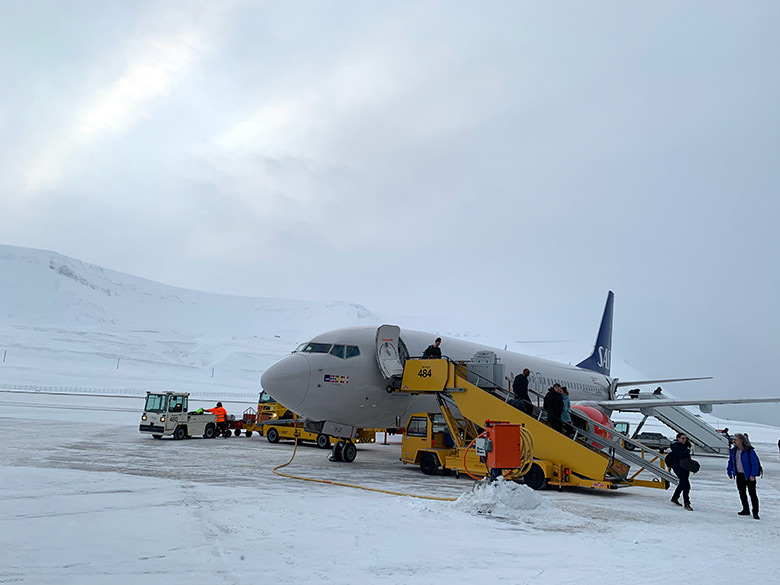
The terminal is small although there is a kiosk (airside) to get food, drink and souvenirs while you wait. A shuttle bus meets all flight arrivals and calls at all hotels and guesthouses in the town. You pay on board and all major cards are accepted, along with cash in Norwegian kroner.
Practical matters
It's normal to remove your outdoor shoes and leave them just inside the entrance in most of Longyearbyen's buildings.
This includes all hotels, the museums, and even some of the restaurants. The tradition goes back to the coal mining days, and was designed to prevent dirty coal dust being brought inside.
Check out these Longyearbyen Facts for more information about living at 78 Degrees North.
Weapons are a common sight due to the regulations requiring people leaving the settlement to carry firearms. It's possible to rent certain firearms from some of the sports stores. Many buildings require guns to be left in a weapons locker, or not brought inside at all.
The whole of Svalbard is Arctic desert. It is an incredibly dry climate, and I got a lot of static shocks throughout my stay. Keeping your skin moisturised is a good idea!
Longyearbyen in the summer
I chose early March for my visit to coincide with the return of the sun. At this time of year, there is proper daylight and proper nighttime, which is rarely the case in Longyearbyen!
I would like to visit during the summer to see the town without snow, although I personally think it would be less enjoyable. The novelty of the midnight sun would soon wear off after a few sleepless nights!
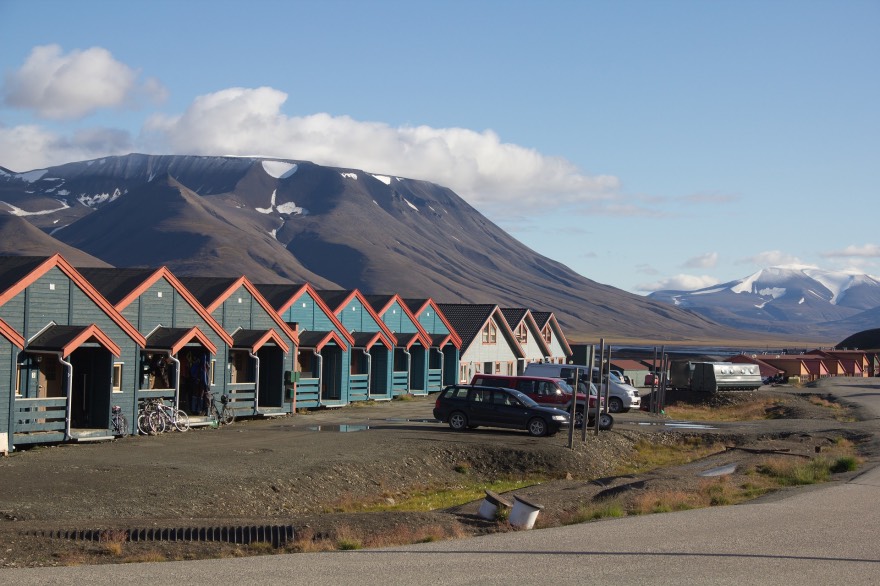
The tourism offer is also very different during the summer. You can't use snow scooters when there is no snow! There are, however, many boat trips to places like the Russian settlement Barentsburg. It's much more comfortable to be outside at this time of year too, which will be a bonus for wildlife enthusiasts.
Have you been to Svalbard during the summer? I'd love to hear your experiences.
The future of Longyearbyen
During my visit many people spoke openly of their concerns about the town's future. Climate change is making a very visible difference here more than anywhere else in Norway.
The warming ocean is attracting different fish, while the avalanche risk has increased in recent years. Just a few years ago, a handful of houses were destroyed when snow and rock tumbled into a residential area.
Right now the town's growth is limited because of a lack of housing. The avalanche risk has led to a large number of houses having to be knocked down. Some new accommodation is being built, but there is very little private ownership here. That means new arrivals are finding it difficult to find housing.
If you enjoyed this post, why not share it on Pinterest? We've got just the pin for that. Just hit those social sharing buttons.

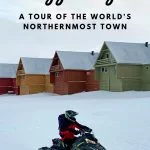

David
Great article and video on Longyearbyen. My wife and myself from Sydney – Australia will be there in July this year for a 6 day expedition cruise.
Cheers
Geoff
Hi, David. I was there in July 2018 and took a fabulous 10-day wildlife cruise, with a couple of days in Longyearbyen on either side. It’s a fascinating place, very different to the subtropics of eastern Australia where I live. I didn’t have any trouble sleeping in 24-hour daylight – probably because I did so much physical activity during the days. It was weird to wake up occasionally at, say, 2 a.m., look outside and find it looked exactly the same as 2 p.m. Love your podcast!
Thanks!! I would love to visit for a cruise in the summer.
I would love to have seen this video before my visit at start of May 19. We stayed in Longyearbyen for 5 days and did a boat trip and snowmobiles to the ice cave. We also did the mines trip to Gruve 3. which was absolutely fascinating.
24hr daylight and temperatures ranging from -7 to +1 C. We were lucky enough to see a mum and cub polar bears on the boat trip. Such a diverse place. There is nowhere quite like it. We plan on returning next year in the summer.
Dear David, thanks for all your informations.
Maybe following report by NRK will illutrate your last point (future of Longyearbyen) a bit better: https://www.nrk.no/chasing-climate-change-1.14859595
Hello David:
It is very concerning that the intent is to stop coal mining in this region, news article referencing that, is that really going to happen? If that does will this become a ghost town and no longer support life, as that seems to be the only source for prosperity other than tourism which is probably limited.
Thank you,
John Johnson/Forbord